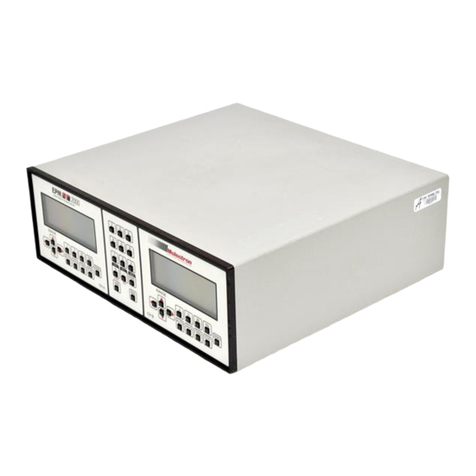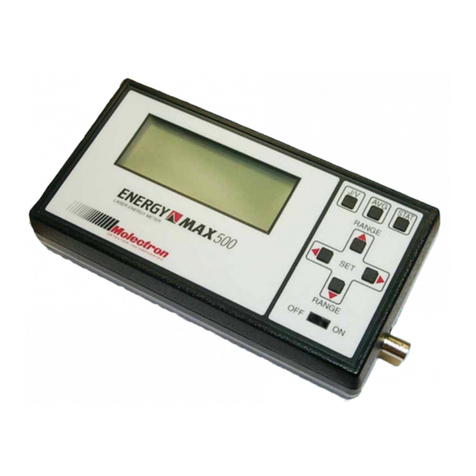
Features & Description
EPM1000 User’s Guide 5
Features & Description
Welcome
Overview Thank you for purchasing an EPM1000. The EPM1000 is a laboratory, AC
powered meter that can measure both pulsed and CW lasers: energy, power,
voltage, and (pulsed only) frequency. The EPM1000 is compatible with all
of Molectron Detector, Inc.’s pyroelectric, silicon, and PowerMax®thermo-
pile probes.
The EPM1000 is fast, accurate, and easy to use. It features:
• a large, custom four-digit LCD
• a 3½” mirrored analog meter
• four operating modes
• many functions
• peak reading with automatic baseline drift compensation
• results displayed in selected units
• an analog output
• an adjustable internal trigger
• an external trigger input
• an RS-232 communication port
• an IEEE-488 communication port
All instrument features are available via the communication ports.
Unpacking and
Inspecting the
Instrument
The equipment described in this manual was delivered to the carrier in
good condition and properly packaged. Immediately open all boxes
comprising this shipment and inspect the instruments for lost or damaged
parts, including case damage, proper button function, etc.
In the unlikely event of damage:
1. Save all shipping boxes and cartons for inspection by the
carrier until the claim is settled.
2. Notify the carrier or transfer agent immediately for a prompt
inspection of the claimed loss or damage.
3. File the claim with the carrier.
4. If necessary, order replacement parts from Molectron Detec-
tor, Inc. and collect the invoice amount from the carrier.
Artisan Technology Group - Quality Instrumentation ... Guaranteed | (888) 88-SOURCE | www.artisantg.com





























